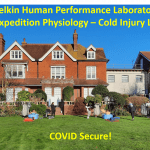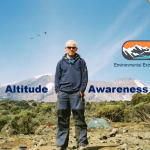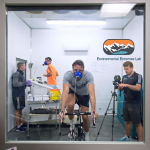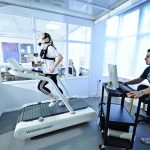With only two months to go until the 33rd annual Marathon des Sables 2018 race, the University of Brighton’s Environmental Extremes Laboratory (EEL) has been busy completing many one-off heat pre-screening tests and arranging heat acclimation protocols for ultra-endurance runners to include in their important tapering periods in the lead up to race departure. The key to a safe and successful Marathon des Sables race is preparation, education and adaptation.
The MdS is a multi-day, 250-km ultra-marathon race across the Sahara Desert in Morocco within extreme environmental conditions of ~40°C. Deemed the “toughest foot race on earth”, self-dependent competitors carry their own backpacks, weighing 5-10 kg along the challenging route which covers sand dunes, dry river beds and, stony and rocky surfaces. Athletes face numerous physiological challenges including; cumulative day-to-day fatigue, restricted water and food availability, sleep deprivation, extreme solar heat loads with limited shade and, prolonged periods of increased core temperature. These detrimental effects exacerbate the physiological and perceptual strain experienced by the runners, which subsequently increases the likelihood of severe dehydration, skin tissue injuries and risk of exertional heat-related illnesses (EHRI), which are the major causes of race-withdrawal and can lead to serious health implications.
Therefore, it is imperative that athletes prepare effectively in the months, weeks and days prior to arriving in Ouarzazate, Morocco before the start of the race. There are various preparation strategies to offer athletes prior to running the MdS, ranging from one-off pre-screening exposures to provide vital educational information (e.g. kit trials and individualised sweat rate strategies) to heat acclimation protocols (e.g. induce long-lasting heat adaptations). The EEL is also able to provide additional information regarding the latest applied and alternate strategies which are not confined to our environmental chamber (e.g. restrictive heat loss training and sauna exposures).
Our recent study in 2016 reports the beneficial physiological (i.e. increased sweat rate) and perceptual adaptations (i.e. improved thermal comfort) induced following short-term heat acclimation (STHA). This method included four repeated 60-minute exercise-heat stress exposures in hot, dry conditions (45°C, 20% relative humidity) leading up to the departure date from the UK.
At the EEL we have a rich history in preparing athletes for exercise in extreme environmental conditions and would be more than happy to help arrange an initial consultation, pre-screening tests or short- to long-term heat acclimation sessions. Please see our attached flyer for further information.
Research Papers, Blogs, Videos:
For further information regarding our MdS research study led by Dr. Ash Willmott and other members of EEL which has since been published in the Journal of Sports Sciences please click here: http://www.tandfonline.com/doi/abs/10.1080/02640414.2016.1265142?needAccess=true
To read our online article “Heat Chamber Acclimation” published by Ultra-Run by Steve Diedrich and two-time MdS winner Elisabet Barnes, please click here:
https://www.runultra.co.uk/Articles/February-2017/Heat-chamber-acclimation?feed=Run-Ultra-Articles
To check out a video of our MdS support please click here:
Contact Details
If you would like to find out any more information on our MdS support, book in 1, 5 or 10 heat sessions, or if you’re interested in any other services related to EEL, please contact our lab director Dr. Neil Maxwell on: n.maxwell@brighton.ac.uk

































Leave a Reply